French or German Medieval Gothic Ivory Right Hand Diptych Panel
A Fine French or German Medieval Gothic Ivory Right Hand Diptych Panel Depicting the Crucifixion Scene of Christ on the Cross Mourned by the Virgin and St John the Apostle contained within a single Trifoliated Arch a Blind Gable above and a Roof Line Treated with Large Floral Crockets and Two Pinnacles
A hole to the top for suspension, remains of old hinges
Attributed to the Master of the Berlin Triptych
Second Half of 14th Century / Circa 1350 - 70
Size: 11.5cm high, 7.5cm wide, 1cm deep - 4½ ins high, 3 ins wide, ¼ ins deep / 14.5cm high - 5¾ ins high (with base)
A hole to the top for suspension, remains of old hinges
Attributed to the Master of the Berlin Triptych
Second Half of 14th Century / Circa 1350 - 70
Size: 11.5cm high, 7.5cm wide, 1cm deep - 4½ ins high, 3 ins wide, ¼ ins deep / 14.5cm high - 5¾ ins high (with base)
The serenity imparted by this well carved panel is typical of a small group of ivories attributed to the Master of the Berlin Triptych who owes his name to a fine triptych of a seated Virgin in the Berlin Museum. Although it is not known if he worked in Germany or France his work is different in detail from that of his contemporaries.
The earliest Gothic ivories were produced in the middle and second half of the 13th century when Limoges enamel was still the dominant material for religious artefacts, but by the end of the century ivory had become the vogue and the taste for objects in the new and rarer material swept across Europe. Paris and the Ile-de-France became the focus of the Gothic style in all branches of the arts, including architecture, manuscript illumination, sculpture in wood and stone, and the production of religious ivories. This dominance resulted in many artisans flocking to Paris to learn the techniques of the workshops, and they returned home to Flanders, England, the Rhineland and northern Italy with the Parisian Gothic style as their template. It is consequently difficult to now differentiate between all the workshops and production centres. However, although these panels represent familiar scenes with routine subject matter, no two surviving Gothic ivory panels are exact duplicates, and each is likely to have been specifically ordered by a patron rather than speculatively produced for casual customers.
The earliest Gothic ivories were produced in the middle and second half of the 13th century when Limoges enamel was still the dominant material for religious artefacts, but by the end of the century ivory had become the vogue and the taste for objects in the new and rarer material swept across Europe. Paris and the Ile-de-France became the focus of the Gothic style in all branches of the arts, including architecture, manuscript illumination, sculpture in wood and stone, and the production of religious ivories. This dominance resulted in many artisans flocking to Paris to learn the techniques of the workshops, and they returned home to Flanders, England, the Rhineland and northern Italy with the Parisian Gothic style as their template. It is consequently difficult to now differentiate between all the workshops and production centres. However, although these panels represent familiar scenes with routine subject matter, no two surviving Gothic ivory panels are exact duplicates, and each is likely to have been specifically ordered by a patron rather than speculatively produced for casual customers.
Ex Private English collection
cf: A similar panel attributed to the Master of the Berlin Triptych in the Art Institute of Chicago (1937.827)
cf: A similar panel attributed to the Master of the Berlin Triptych in the Art Institute of Chicago (1937.827)
French or German Medieval Gothic Ivory Right Hand Diptych Panel
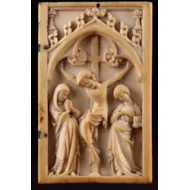
SOLD
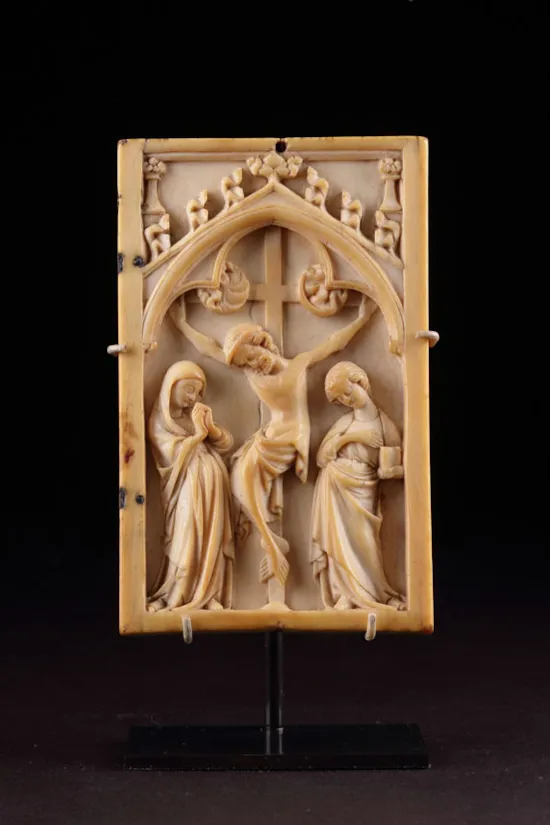
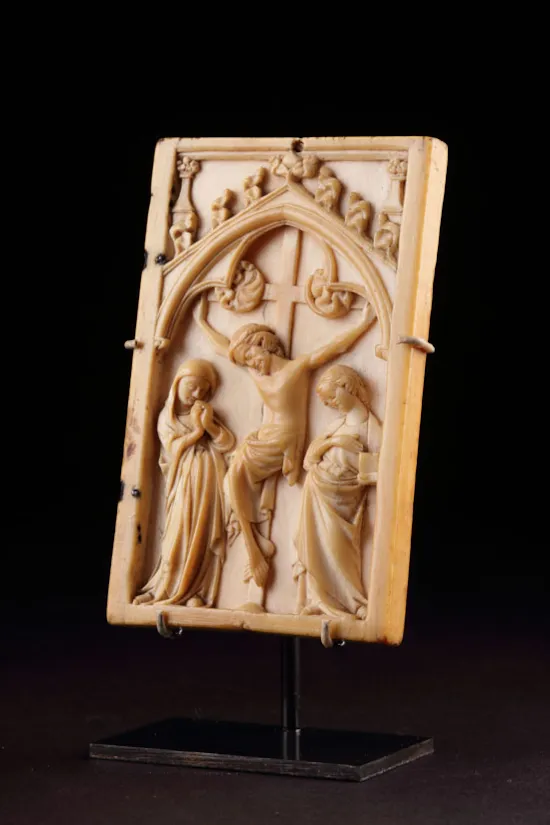
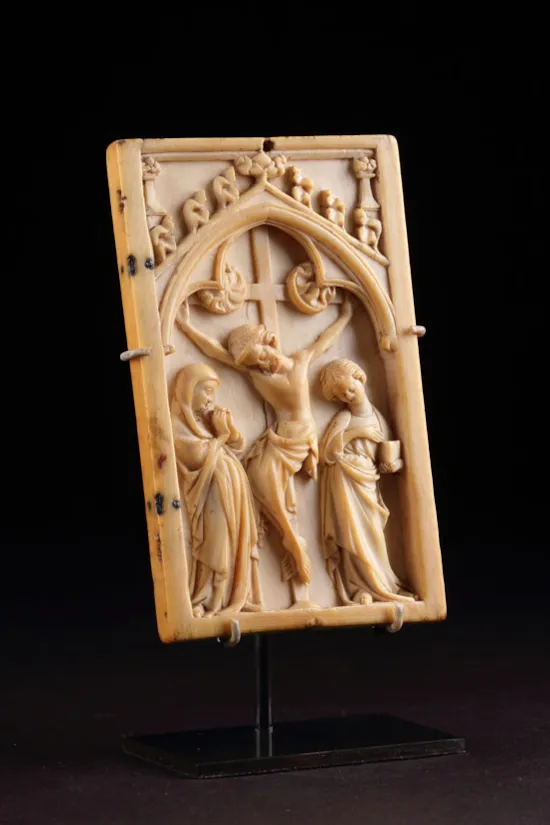
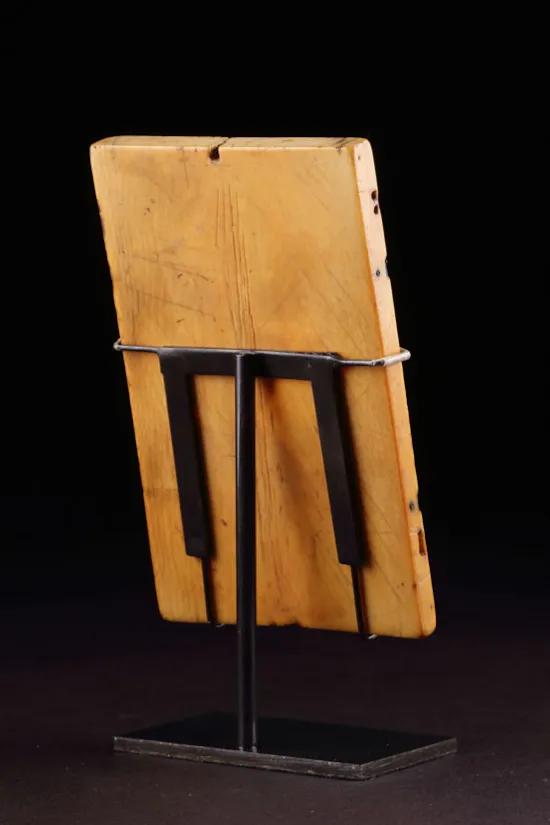
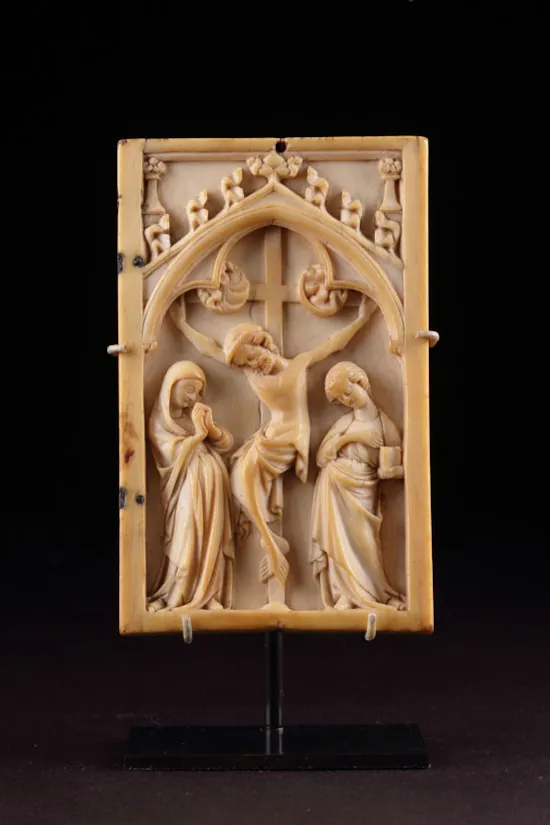





YOU MAY ALSO LIKE

